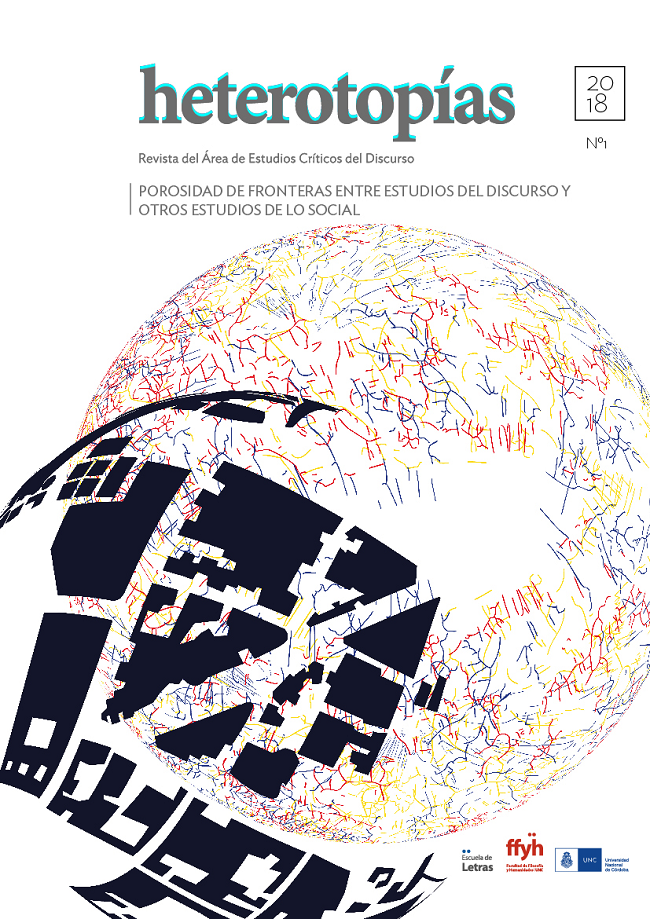Debatir Potosí. Mercado, imagen y ritual en la escena poscolonial
Main Article Content
Abstract
La muestra de arte Principio Potosí. ¿Cómo podemos cantar el canto del Señor en tierra ajena? (Creischer, Hinderer, Siekmann, 2010) vuelve a la explotación colonial de las minas de Potosí como proceso de acumulación originaria desde donde pensar el comienzo del capitalismo y las relaciones centro–periferia. A partir de esta idea, se proponen analogías entre la explotación colonial y la capitalista, entre la pintura colonial y el arte actual
Desde Bolivia se plantea un contra–proyecto a la muestra, Principio Potosí Reverso (Rivera Cusicanqui y El Colectivo, 2010) bajo el precepto de que si hay algo así como un “Principio Potosí” este debe ser pensado desde la resignificación andina de los procesos coloniales. El foco está puesto menos en la circulación global de la plata que en el mercado interno y en la franja intermedia de negociaciones que este generó. Si en Principio Potosí “mercado”, “imagen” y “ritual” son pensados desde la lógica equivalencial de la acumulación capitalista, en Principio Potosí Reverso son tensionados desde la lógica inequivalente del ethos andino.
Downloads
Article Details
Those authors who have publications with this journal, accept the following terms: Those authors who have publications with this journal, accept the following terms:
a. The authors will keep their copyright and guarantee to the journal the right of first publication of their work, which will be simultaneously subject to the Creative Commons Attribution - Non-Commercial - Share Alike (by-nc-sa) Attribution License; no commercial use of the original work or any derivative works is allowed, the distribution of which must be done with a license equal to the one that regulates the original work.
b. Authors may adopt other non-exclusive license agreements for the distribution of the published version of the work (e.g., deposit it in an institutional telematic archive or publish it in a monographic volume) provided that the initial publication in this journal is indicated.
c. Authors are allowed and recommended to disseminate their work through the Internet (e.g. in institutional telematic archives or on their website) before and during the submission process, which may lead to interesting exchanges and increase the number of citations of the published work. (See The effect of open access).
How to Cite
References
ASSADOURIAN, Carlos (1982). “La organización económica espacial del sistema colonial” en El sistema de la economía colonial: mercado interno, regiones y espacio económico. Lima: Instituto de Estudios Peruanos.
CARDOSO, Fernando Henrique y FALETTO, Enzo. (1992). Dependencia y desarrollo en América Latina. México: Siglo veintiuno.
CREISCHER, Alice, HINDERER, Max, SIEKMANN, Andreas, (eds.). (2010). Principio Potosí. ¿Cómo podemos cantar el canto del señor en tierra ajena? Madrid: Museo Nacional Centro de Arte Reina Sofía.
GALEANO, Eduardo. (2004) Las venas abiertas de América Latina. México: Siglo Veintiuno.
GUNDER FRANK, André. (1979) Capitalismo y subdesarrollo en América Latina. Buenos Aires: Signos.
HALPERIN DONGHI, Tulio. (1982). “‘Dependency Theory’ and Latin American Historiography”, Latin American Research Review, 17, 1, 115-130.
JAMESON, Fredric. (1991). Posmodernismo, o, la lógica cultural del capitalismo avanzado. Barcelona: Paidós.
MEDINA, Cuauhtémoc. (2010). “Nuevo traje poscolonial”. Recuperado de http://esferapublica.org/nfblog/nuevo-traje-poscolonial/.
PRESTA, Ana María. (2010) “Potosí y la minería en la historiografía argentina: El “espacio” de los maestros”. Surandino Monográfico, 1, 2. Recuperado de: http://www.filo.uba.ar/contenidos/investigacion/institutos/ravign ani/prohal/mono.html.
RIVERA CUSICANQUI, Silvia y El Colectivo. (2010). Principio Potosí Reverso. Madrid: Museo Nacional Centro de Arte Reina Sofía.
